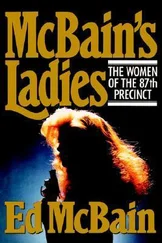Christmas was only — well, this was already the twelfth, be Christmas in just a little while.
Lots of orchids blooming.
Most beautiful spot in the whole world was this greenhouse right here.
Beauty everywhere around him.
You walked through the greenhouse here, past the moth orchids, what were properly called Phalaenopsis , you could be anyplace they grew naturally, Formosa or India, New Guinea or the Philippines — where that other bitch had a million pairs of shoes. In all those shoes, had there been any boots? Red boots?
Your moth orchid came in reds as bright as her boots, came in oranges, too, yellows, greens, pinks. White ones with lips as red as her boots, as red as her lips. White ones with yellow lips. Spotted, striped, or plain, to his mind she was the most beautiful of all the orchids.
Your Moth Orchid was very long-lasting.
He wondered how long she would last when he put her out.
Put her out on Christmas Day.
All these orchids should still be blooming then.
Your Cattleya tenebrosa . Coppery brown petal with a dusky purple lip.
Your Cattleya hybrids with their large white flowers and yellow lips.
Lips.
Opening wide.
Your Cattleytonia ‘Rosy Jewel’ hanging up there in a fern basket high up in the greenhouse, nothing prettier except your moth. Three-inch fuchsia-colored flowers in clusters of eight, nine blossoms.
The Paphiopedilum growing over there near the Kool-Cel unit, where the recycled water was chilly and humid. Her nickname was lady’s slipper, clear green leaves on some of them, mottled on others, big waxy flowers that looked artificial. Lady’s slipper.
Your slipper orchid, the Phragmipedium , was the only one didn’t remind him of a woman. Looked like an old Chinese man with a long mustache. Tall spike. Pouch instead of a lip, two long ribbonlike petals on either side of the pouch. Needed the Kool-Cel unit, too. You had to treat delicate things proper, or they’d die. Beautiful things. You had to know how to take care of beauty. You couldn’t abuse beauty.
He knew how much her beauty meant to her.
Long red hair — well, not no more — full pouting mouth, lips as scarlet as blood, eyes as dark green and brooding as the leaves on the Phalaenopsis schilleriana , skin as white as the flowers of the Amabilis , a beautiful towering woman with pink-tipped breasts and flaring hips and long legs with white thighs and shapely calves and slender ankles, a luminous woman all red and white and pink and green, green eyes, red hair above, red hair below, red lips, pink lips, soft white skin, soft red boots, puss in boots, he didn’t think she would much enjoy being ugly.
You sometimes got dazzled by your own beauty, you forgot it was God-given. He would explain that to her. It was like with orchids. You sometimes tended to overlook some of them that were ugly in appearance, you passed them by till you got to know them better, and then they took on their own characteristics and their own personalities and for all their ugliness they became interesting and beautiful in their own right.
Maybe she wouldn’t mind being ugly.
Calusa was growing and changing, but some things remained ever and always the same.
The average annual temperature, for example, was seventy-three degrees Fahrenheit. That was something like twenty-three degrees Celsius, which only sounded much lower.
The average annual rainfall was fifty inches.
There were almost thirty-five miles of white sand beaches in Calusa.
Those were the constants.
Everything else was growing and changing so rapidly that a great many citizens were thinking back to ten years ago as the good old days, kidding themselves into believing Calusa had been just a small fishing village when they’d moved down. Where they’d moved down from, for the most part, was Illinois, Indiana, and Ohio. Now and then you got a former New Yorker like Frank Summerville, but he was a rarity. Calusa, Florida, was the American Midwest transported to the Gulf of Mexico.
More and more people kept moving down to Calusa every year.
At the time of the national census six years ago, the city’s population was 48,800. Today, it stood at a bit more than 53,000. The county’s population back then was 202,000. Today, it was 222,000.
Growth.
Change.
Progress.
Crime was on the increase.
This year, as Warren had reported to Matthew, it had shot up seventeen percent over the year before.
“Drug related,” the cops said.
Five years ago, you could maybe buy a dime bag of heroin if you had the right connections.
Today, you could buy crack right on the Whisper Key beach.
Ten years ago, the yellow pages of the Calusa telephone directory had listed no “escort” services. This year there were seven of them, one of which offered senior discounts.
“Loose women drifting over from Miami,” the citizens said.
Five years ago, there was only one topless nightclub in Calusa. It was called Club Alyce. Last year, there were two, the second one calling itself Up Front. A third topless joint had opened this year. It called itself the Naked Truth.
“We will close them all down,” said Skye Bannister, the state attorney.
On Saturday night, December 13, in the growing, changing, progressive city of Calusa, Florida...
George Ticknor and Mosley Jones went to The Naked Truth...
Matthew and Susan Hope went to the Snowflake Ball...
And Henry Gardella broke into the Markham house.
She wouldn’t tell any of them her real name.
The name she was using for the picture was Constance Redding. Constance sounded puritanical, like Charity or Felicity, she said, which was amusing for an actress playing a woman who would screw even a squirrel. The last name referred to her flaming red hair. Constance Redding. God only knew what her real name was.
On the set, they called her Connie at first.
And then, later on, Connie Lingus.
She’d toss her red hair and smile.
Then she’d go down on Jake again.
Jake was the black guy playing the miller’s son, Tom, who inherited only a cat when his father died. Connie was playing the cat. Puss in Boots. A modern-dress version, but the old fairy tale nonetheless. Jake was his real first name, but his last name had been chosen by Prudence Ann Markham, “La Directrice,” as they sometimes called her, when they weren’t calling her Otto, after Otto Preminger. She’d plucked the name from the pages of Hemingway’s novel The Sun Also Rises . The name was supposed to be an inside joke, since Jake in the book was impotent, and Jake in their movie was insatiable. When you read the credits, you were supposed to get a chuckle out of seeing the name Jake Barnes.
After the first week of shooting, they all came up with comical names to use on the credit cards. The cinematographer wanted to call himself Seymour Hare. The gaffer wanted to call himself Wun Hung Low. The sound man decided he liked I. Kutcha Kokoff. La Directrice vetoed all these suggestions. She was going for class and style here, she told them. She herself had decided to use the name Martin N. Prudeaux for her director’s credit, on the theory that men didn’t want to see a porn flick directed by a woman, and also Prudeaux sounded French, which intimated great sexual knowledge and which also referred back to the source of the fairy tale, the writer Charles Perrault. Not all fairy tales were written by Grimm.
Tick and Mose wished now that they’d gotten Connie’s real name, and also Jake’s full name. They figured Prudence Ann Markham, aka Martin N. Prudeaux, was the only one who knew those names because she was the one who wrote out the weekly paychecks from the Prudent Company’s account — but it so happened she was dead. They were pretty sure that Jake was Jake’s real first name, but what was the rest of it? And Constance Redding was anybody’s guess, flaming Connie Lingus who could engorge organs as large as the one at Radio City Music Hall.
Читать дальше












